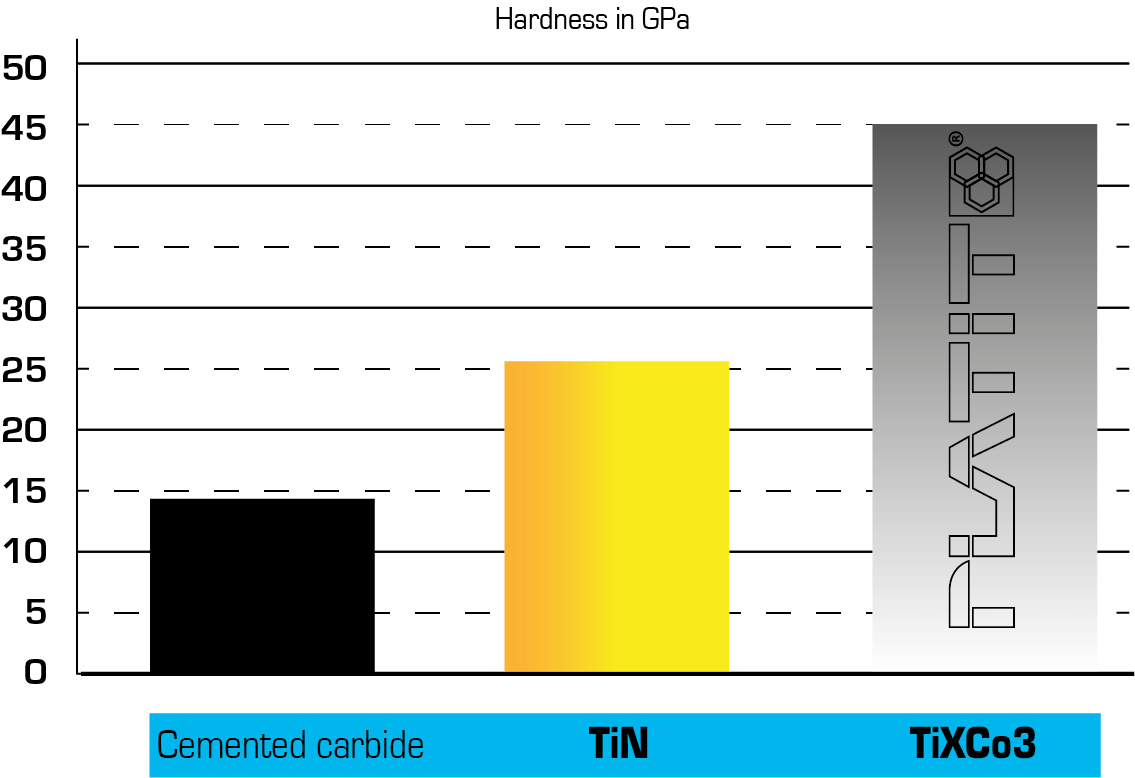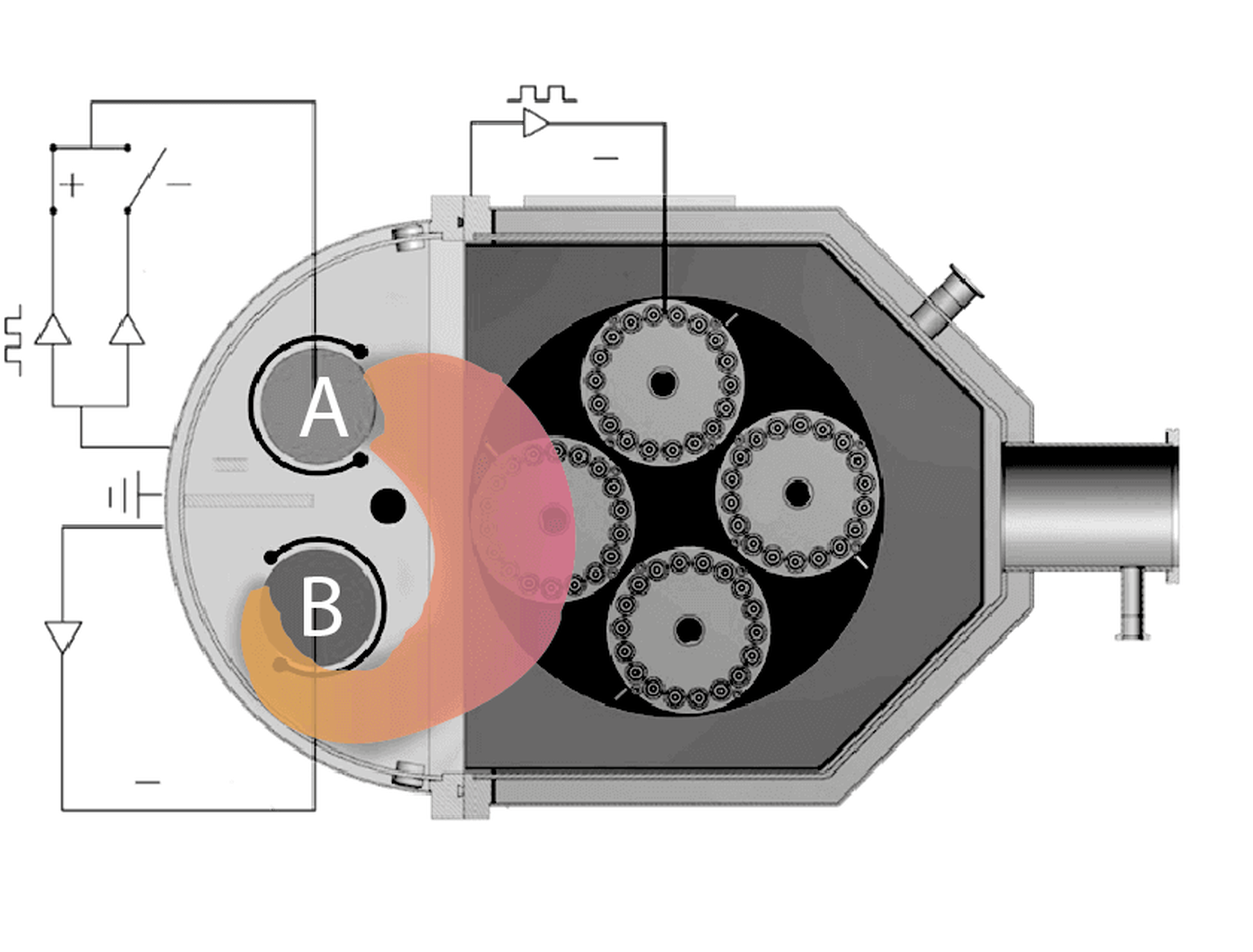What is a coating

A PVD hard coating is a thin protective film intended to improve the surface properties of a base material,
IN TERMS OF:
- Hardness
- Oxidation resistance
- Friction
- Fracture toughness
- Chemical stability

For example, the coating on a cutting tool allows faster cutting speeds, resulting in higher productivity and longer lifespan of the base material.
Coating process
1
Loading
The coating chamber is loaded
2
Evacuating
A high vacuum is required for depositing PVD coatings.
The evacuation in PLATIT coating units takes place in two steps:
- The rotary-vane pump generates an inlet pressure in the chamber from 100 to 10 -2 mbar
- The turbomolecular pump generates a high vacuum of approximately 1 x 10 -5 mbar
3
Heating
The chamber is heated up;
process temperatures are about 150 - 500°C
4
Plasma etching
PLATIT coating units work with three different etching processes:
- LGD® (Lateral Glow Discharge)
- Plasma etching with argon, glow discharge
- Metal ion etching (Ti, Cr)
5
Coating deposition
Coating deposition with PVD (ARC, SPUTTER or hybrid LACS® technology) or PECVD processes
6
Cooling
Cooling of the coating chamber
7
Unloading
The coating chamber is unloaded
LGD® etching
Lateral Glow Discharge is the patented etching process in PLATIT’s coating units
Etching with LGD® can process even complex surfaces and cavities as well as cutting-edges and corners (e.g. of hobs, molds and dies), thanks to plasma with high ion density generated by an electron flow between two cathodes.
Use of shutters:
- Targets are cleaned by igniting an ARC behind the shutter on the target surface without contaminating the tools
- The shutter is opened after the cleaning process of the target, which creates ideal conditions for optimal coating adhesion
